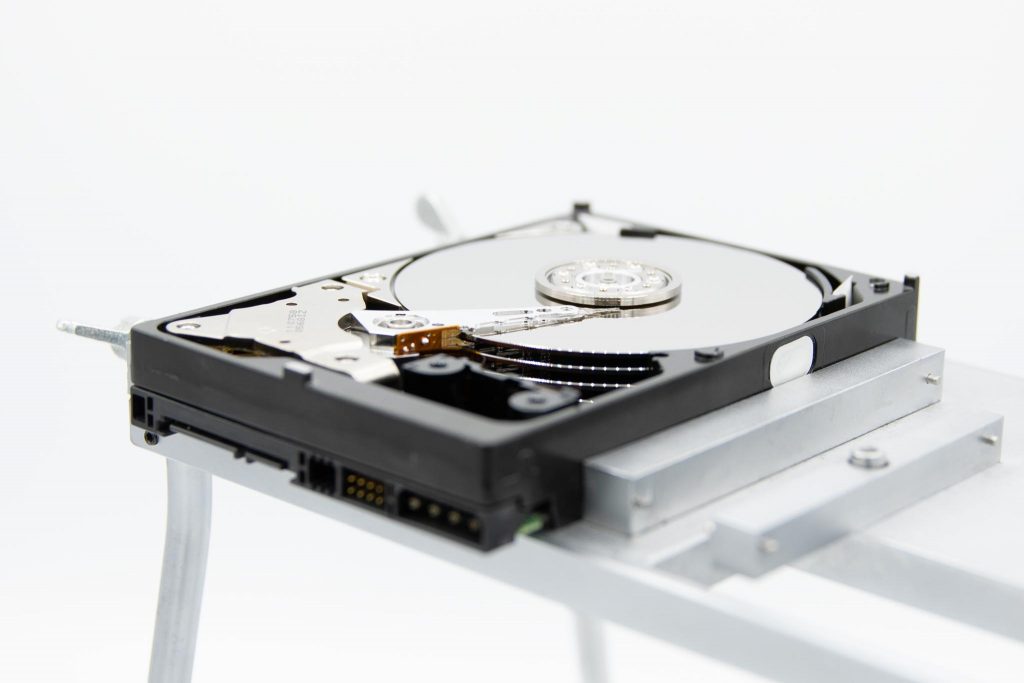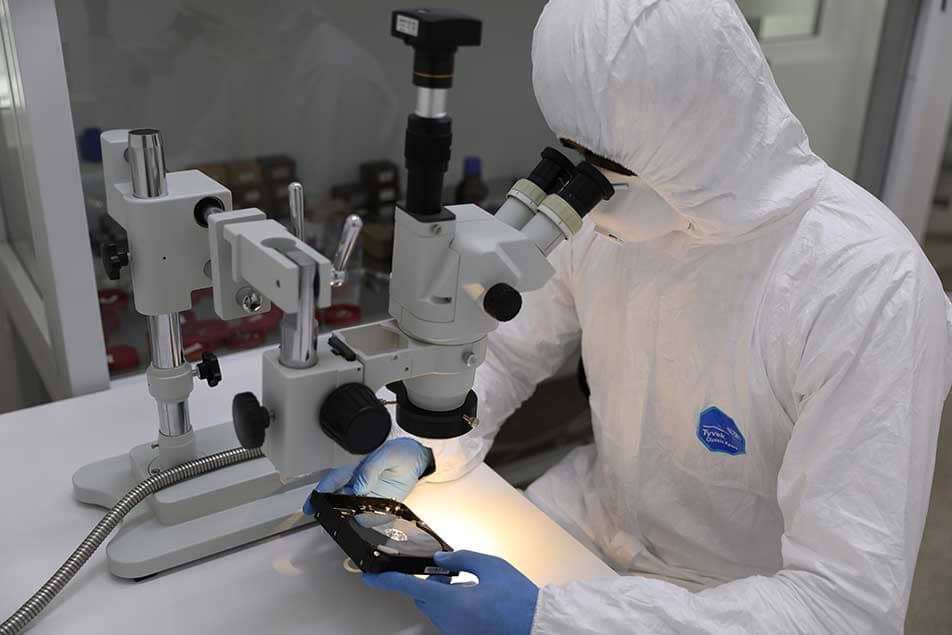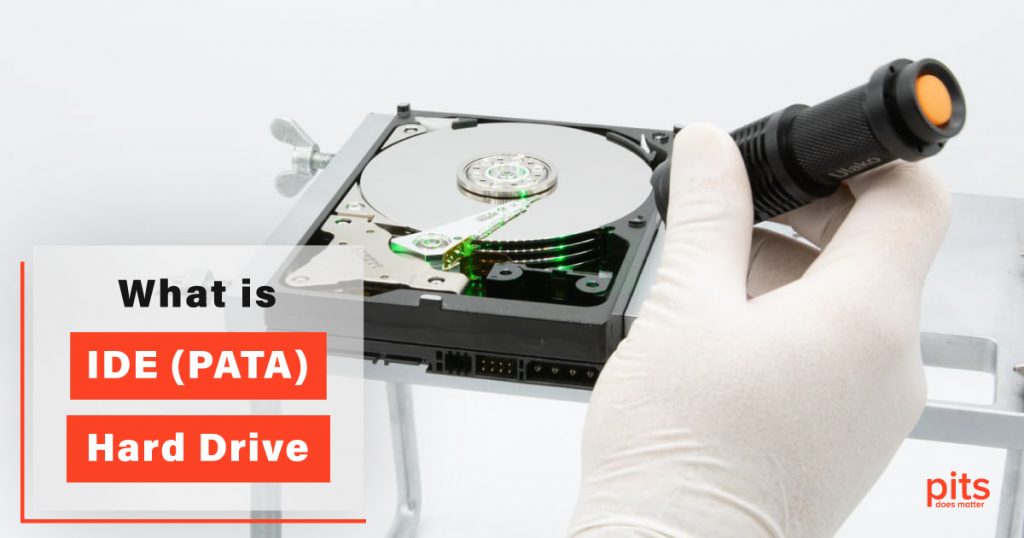IDE (Integrated Drive Electronics) hard drives, also known as Parallel ATA (PATA) drives, were once the standard storage option for desktop computers. Although IDE drives have been largely replaced by newer and faster technologies such as SATA (Serial ATA), they were once the workhorse of the computing world.
In this article, our team will dive into what IDE hard drives are, how they work, and where they are still used.
Definition of IDE Hard Drives
An IDE hard drive is a type of storage device that uses a parallel interface to connect to a computer’s motherboard. It consists of a spinning disk and read/write head that can quickly access and store data.
IDE drives come in various sizes and storage capacities, ranging from a few gigabytes to terabytes. They are commonly found in older desktop computers and some older laptops. However, with the advancement of technology, IDE drives have been replaced by faster and more efficient SATA or Solid State Drives (SSD).
One of the main advantages of IDE drives is their affordability. They are typically cheaper than other types of hard drives, making them a popular choice for budget-conscious computer users. However, this comes at a cost of slower data transfer speeds compared to newer technologies.
Another advantage of IDE drives is their compatibility with older systems. Since they have been around for decades, most computers built before 2007 will have an IDE interface on their motherboard. This allows users to easily upgrade their storage without having to replace the entire system.
How Does PATA HDD (IDE HDD) Work
The term “PATA” stands for Parallel ATA, and it refers to the way that data is transmitted between the hard drive and the motherboard. PATA devices use a parallel interface, meaning data is sent in multiple bits simultaneously.
The PATA interface has a 40-pin or 80-pin ribbon cable connecting the hard disk drive to the motherboard. The PATA cable carries data and power to the device, allowing it to spin up and access data as needed.
When data is written to or read from the drive, it is sent in parallel over multiple wires in the cable. This allows for faster transfer speeds than a serial interface (such as SATA) would allow, but it also requires more wires and can be more prone to interference.
PATA drives also have several jumper settings that can configure the drive’s client/server status and other settings. These jumpers are small plastic caps that fit over pairs of pins on the back of the device, and they are used to specify which drive should be the primary (client) drive and which should be the secondary (server) drive.
Where IDE Drives are Used
IDE hard drives were once the standard storage option for desktop computers, and they can still be found in some older machines. They were also commonly used in servers, where large amounts of storage were needed.
One of the primary advantages of IDE drives is that they are relatively cheap and easy to find. This makes them a good choice for older machines or people who need a lot of storage but do not want to spend much money.
IDE drives are also known for their durability and reliability. They are less prone to mechanical failures than other types of drives, making them a good choice for mission-critical applications.
However, there are some downsides to IDE drives as well. One of the biggest is their slower transfer speeds compared to newer technologies such as serial ATA (SATA). This can make them less suitable for tasks that require a lot of data transfer, such as video editing or gaming.

Another downside is that IDE interface drives are limited in their maximum storage capacity. While some IDE drives can hold several terabytes of data, they are less common than SATA devices with similar capabilities.
Common Causes of PATA Hard Drive (IDE) Data Loss
Physical Damage
Physical damage is one of the most common reasons for data loss on PATA hard drives. This can happen due to various factors, such as dropping the drive, exposing it to extreme temperatures or moisture, or subjecting it to electrical surges.
When a PATA hard drive is physically damaged, the read/write head may become misaligned or damaged, preventing it from accessing data on the drive. In some cases, the platters may become scratched or damaged, making it impossible to retrieve data from them.
Software Issues
Software issues are another common cause of data loss on PATA hard drives. These can occur due to many factors, such as viruses or malware, software bugs, or operating system failures.
In some cases, software issues can cause data to become corrupted or unreadable, making it impossible to access. This can be particularly problematic if important files or documents are affected.
Human Error
Human error is another common cause of data loss on PATA hard drives. This can occur due to the accidental deletion of files, formatting of the drive, or overwriting of important data.
In some cases, data may be lost due to human error if the user is not properly backing up their files or needs to be using proper security measures to protect their data.

Mechanical Failure
Mechanical failure is another common cause of data loss on PATA hard drives. This can occur due to wear and tear on the device over time or due to manufacturing defects or other issues.
When a PATA hard drive experiences mechanical failure, it may become unable to spin up or produce clicking or grinding noises. This can make it impossible to access data on the drive.
Power Outages
Power outages and other electrical issues can also cause data loss on PATA hard drives. When a PATA hard drive is not properly shut down, data may be lost or corrupted due to incomplete writes or other issues.
In some cases, power outages may also cause damage to the drive itself, particularly if there are electrical surges or other issues during the outage.
If you are facing data loss on your IDE drive, it is essential to entrust your case to professionals. PATA drives have old technology, which only engineers with years of experience can handle. Hence, send your device to specialists at PITS.
PITS Global Data Recovery Services is a leading data recovery company that offers a wide range of services for IDE (PATA) hard drives. Our team of experienced technicians has the expertise and equipment necessary to recover data from even the most challenging situations.
Benefits of Working with Us
We provide PATA hard drive data recovery services for all types of IDE drives, including desktop, laptop, and server drives. Our technicians are familiar with all makes and models of PATA hard drives and can recover data from drives that have suffered physical damage, logical failures, or any other type of issue.
We use state-of-the-art tools and techniques to recover data from PATA hard drives, including advanced imaging methods and specialized equipment for repairing damaged drives. Our technicians can recover data from drives damaged by water, fire, electrical surges, or other environmental factors.
Our data recovery process begins with a risk-free evaluation of the hard drive to determine the extent of the damage and the likelihood of successful data recovery. We provide a detailed analysis of the problem and an estimated cost for the recovery service. Our technicians will work with you to determine the best course of action for your data recovery needs.
What Our Clients Say About Us:
We take the security and confidentiality of your data very seriously. We use state-of-the-art security protocols to protect your data at every stage of the recovery process and guarantee that it will remain confidential.
If you are in need of data recovery services for your IDE (PATA) hard drive, PITS Global Data Recovery Services can help. Our experienced technicians have the tools and expertise to recover data from even the most challenging situations.
Frequently Asked Questions
Can IDE (PATA) Hard Drives be recovered if they fail?
Absolutely. While IDE (PATA) hard drives are considered older technology, data recovery is still very possible. The recovery process involves using specialized hardware and software to access the data on the drive, even if the computer is no longer functioning properly. The success of recovery can depend on the nature of the failure, but many cases see a high rate of data retrieval.
What is a PATA IDE hard drive?
A PATA IDE hard drive, also known as Parallel ATA or Parallel Advanced Technology Attachment, is a type of hard drive used in older computers. It served as the main connection for linking storage devices such as hard drives and CD/DVD drives to computers before SATA became the standard.
Can IDE (PATA) Hard Drives be connected to modern computers?
Yes, it is possible to connect an IDE (PATA) hard drive to a modern computer. However, most modern computers do not have IDE connectors, so you will need to use an adapter or external enclosure with USB connectivity in order to access the data on the drive.
Can physically damaged IDE (PATA) hard drives be recovered?
Physically damaged IDE (PATA) hard drives present a more complex challenge for data recovery, but it is not necessarily impossible. The success of recovery from physical damage depends largely on the extent and nature of the damage. Situations such as a damaged circuit board scratched platters, or failing motors require specialized equipment and a cleanroom environment for a chance at successful data retrieval. Professional data recovery services have the tools and expertise needed to attempt to recover data from physically damaged drives, though the chances of success and costs involved can vary significantly.
Is PATA better than SATA?
It’s difficult to make a direct comparison between PATA and SATA as they serve different purposes. PATA was the standard for connecting storage devices in older computers, while SATA has become the standard for modern computers due to its faster data transfer speeds and smaller cables.
